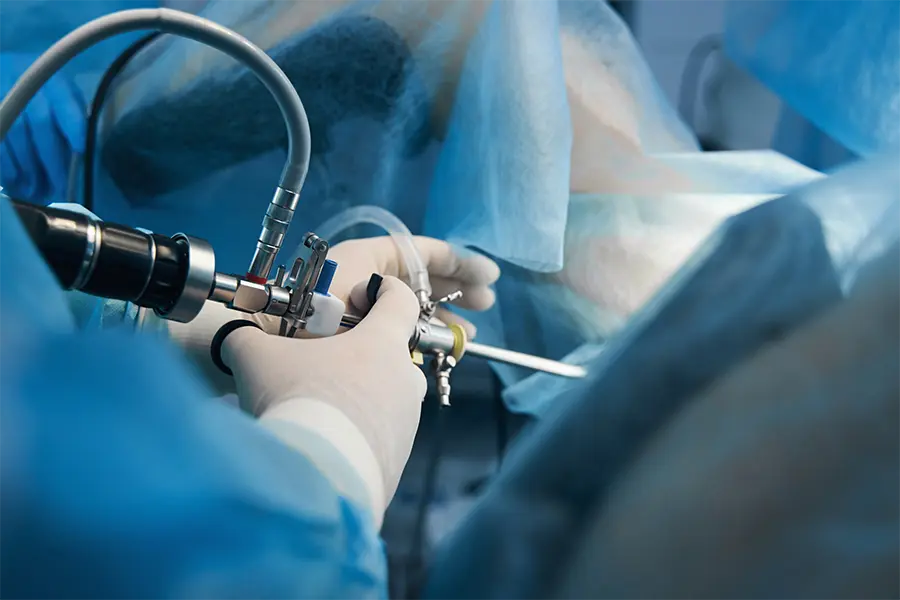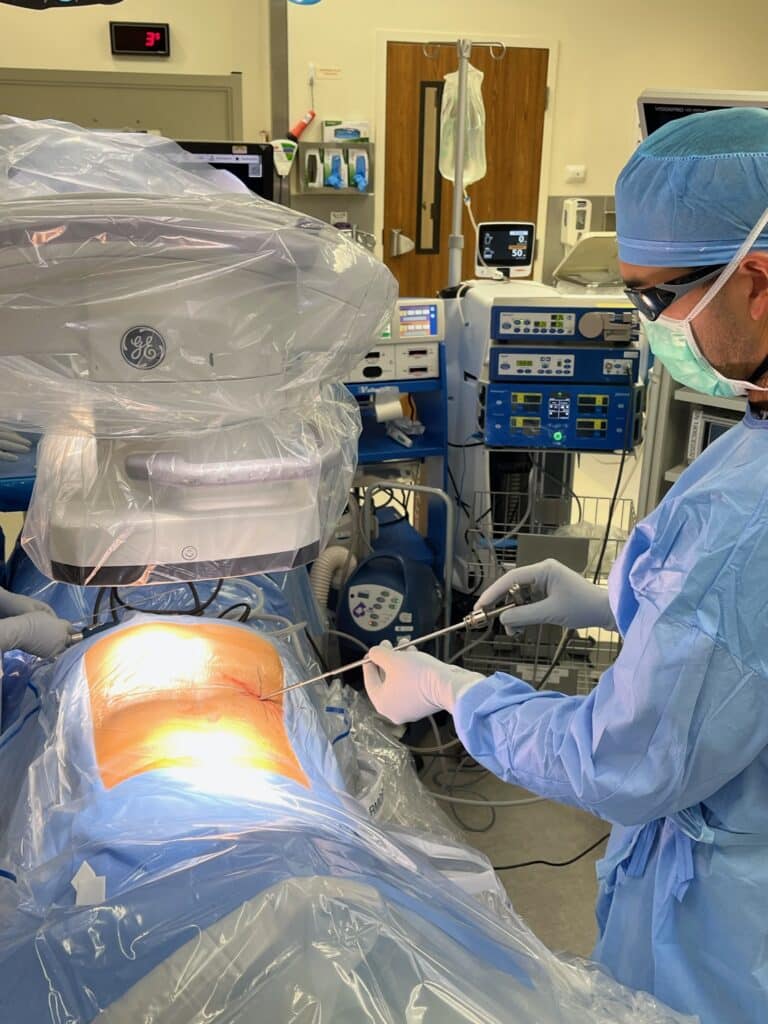
The Newest Treatment for Spinal Stenosis
Revolutionizing Spinal Stenosis Treatment with Endoscopic Spine Surgery
Spinal stenosis is a common spinal condition that debilitates millions of people, often leading to chronic neck or back pain, numbness extending down the arms or legs, and can lead to challenges with daily activities. For many, the thought of invasive surgery or long-term therapies causes them to avoid pursuing care from a spine specialist. The risk of delaying care could impact the amount of effective options available for those that are in pain and need treatment. Endoscopic spine surgery is one of the newest advancements in spinal stenosis treatment, offering an ultra-minimally invasive (MIS) approach that prioritizes patient safety, faster recovery, and long-term relief.
As the first spine surgeon to perform endoscopic spine surgery combined with robot-guided surgery at Reston Hospital Center and a 2025 Castle Connolly Top Doctor, I am helping reshape the future of spine care. This innovative approach enhances patient safety, reduces recovery times, and helps those suffering from neck or back conditions return to their daily lives faster.
Understanding Spinal Stenosis and the Treatment Options
Spinal stenosis is a medical condition where the spinal column narrows, putting pressure on the nerves and causing back pain, which affects nearly 95% of the population. The most common cause is degenerative changes due to aging, including disc height collapse, disc herniations, thickened ligaments, and arthritic bone spur formation (spondylosis).
Types of Spinal Stenosis
Spinal stenosis can occur in different regions of the spine, each with unique challenges and symptoms.
Cervical Spinal Stenosis (Neck)
In cervical spinal stenosis, patients may or may not experience neck pain or symptoms of radiculopathy. More commonly, they present symptoms of myelopathy, which is the term used to describe neurologic symptoms related to the spinal cord. A condition where spinal cord compression causes progressive nerve damage, potentially leading to paralysis.
- Symptoms include neck pain, numbness or weakness in the arms and hands, balance issues, and difficulty with fine motor skills.
Lumbar Spinal Stenosis (Lower Back)
Spinal stenosis may occur throughout the spine but is typically more common in the lumbar spine (low back). Pain typically worsens with standing and walking but improves when sitting or bending forward, making it a major factor in reduced mobility and quality of life for older adults.
- Symptoms include lower back pain, leg pain, tingling, or weakness (radiculopahty), and heaviness or fatigue in the legs.
If you’ve been diagnosed with or suspect spinal stenosis, you may be searching for effective treatment options to relieve pain and regain your quality of life. I understand firsthand how overwhelming spine and nerve pain can be. I’ve experienced it myself—unable to sit, stand, walk, or even sneeze without excruciating pain. But there is hope. Thanks to advancements in spine care, including endoscopic spine surgery, my patients are completely pain-free and able to live life without limitations.
What is Endoscopic Spine Surgery?
Endoscopic spine surgery is an ultra-minimally invasive (MIS) procedure that relieves nerve pressure and helps patients get back to a pain-free life. Spine surgery should be as gentle on the body as possible. Since the spine lies beneath layers of muscle, accessing it requires precision. Traditional spinal surgeries often involve large incisions that cut through muscle, leading to more pain and longer recovery times. If not performed carefully, these procedures can cause complications. This is where minimally invasive surgical techniques, like endoscopic spine surgery, make a difference—allowing for smaller incisions, less tissue disruption, and a faster, smoother recovery.
How Does Minimally Invasive Endoscopic Spine Surgery Work?

Micro-Incision & Muscle Preservation
Rather than cutting muscles, the procedure involves a micro-incision—smaller than 1 cm—where the surgeon gently separates the muscles. This technique preserves the patient’s natural anatomy, reduces post-surgical pain, and accelerates healing.
High-Resolution Surgical Cameras
Using a micro-incision (less than 1 cm), we leverage the magnification of an HD endoscope to perform precise microsurgery. While minimally invasive techniques are now common in spinal surgery, endoscopic spine surgery takes it a step further by utilizing ultra-minimally invasive technology. This method not only refines traditional surgical techniques but also minimizes tissue disruption, reduces post-operative pain, and speeds up recovery. Typically performed as an outpatient procedure, it requires less anesthesia, allowing patients to heal faster with minimal discomfort.
Can You Correct Spinal Stenosis Without Surgery?
For most patients, surgery is not the first or only solution—many cases can be effectively managed with non-surgical treatments, including physical therapy, injections, medications, and other conservative approaches. However, in some cases, surgery may be necessary to alleviate symptoms and restore function. Lumbar spinal stenosis occurs when nerve compression in the lower back—often due to disc herniation—causes significant pain and mobility issues. A damaged disc, which acts as the spine’s natural shock absorber, can rupture and press against surrounding nerves, leading to discomfort and functional limitations. Spinal stenosis can be debilitating, affecting everything from daily tasks like caring for children and household chores to more demanding activities such as running, hiking, and sports. Fortunately, many patients find relief through non-surgical treatments that improve mobility and reduce pain, helping them regain their quality of life.
Am I a Candidate for Minimally Invasive Endoscopic Surgery?
Many patients with mild to moderate spinal stenosis are ideal candidates for minimally invasive endoscopic surgery. However, severe cases may still qualify, depending on the specific condition and symptoms. A consultation with a spine specialist is essential to determine eligibility.
At VSI, we are at the forefront of endoscopic technology for spinal fusions and decompressions. Our commitment to cutting-edge treatments, patient safety, and faster recovery times secures our position as a leader in spine care.
If you have been diagnosed with spinal stenosis or are exploring minimally invasive treatment options, schedule a consultation (in-person or via telemedicine) today to see if endoscopic spine surgery is right for you.
Discover VSI’s Advances in the Newest Treatment for Spinal Stenosis
Topics covered
About the Author
Featured Resources
Insights to Achieve a Pain-Free Life



